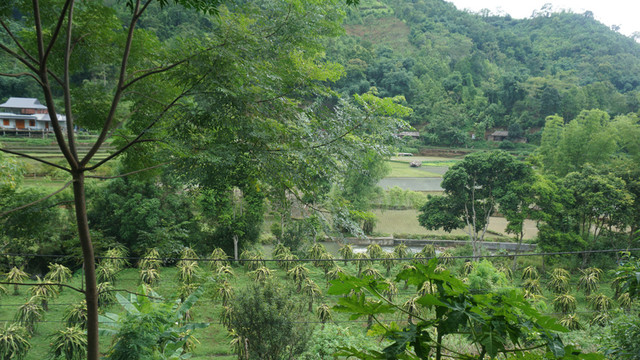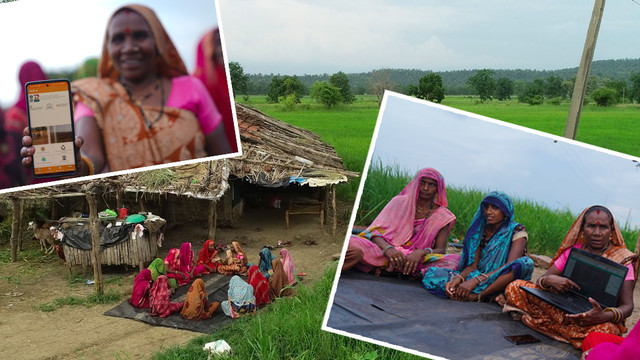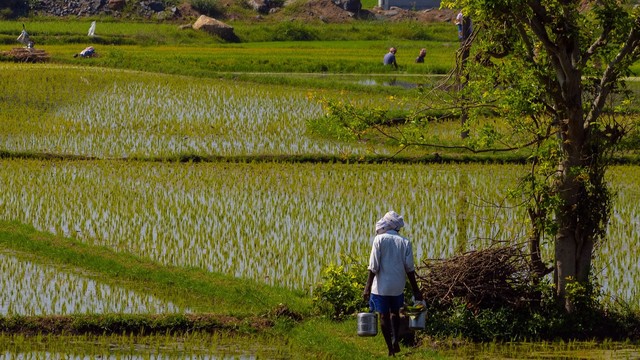Where honey means money and climate means change
Ha Thi Ngan is a young woman with a buzz about her. She's a beekeeper and her story provides a snapshot of the way poverty, nature and climate can combine to affect lives and set questions with no easy answers.

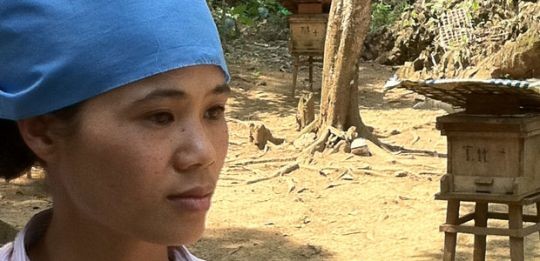
Ha Thi Ngan, a beekeeper from the village of Ri, Thanh Hoa province, with her beehives (Photo: copyright Mike Shanahan)
Ngan lives in a village called Ri in the remote highlands of Vietnam's Thanh Hoa province. It's beautiful. Everywhere you look is green-green-green, from the forested limestone mountains that look like the humps of long dead dragons to the flat sheets of emerald rice fields that shimmer in the sun.
But Ri is also poor. Ngan's family works long and hard to grow rice and cassava and get milk from their water buffalo. After feeding the household these efforts bring in just US$240-288 a year.
When development organisation Care Vietnam and the district government began a project to improve livelihoods in the wider area they asked communities there to identify the problems they faced. Then they asked them to dream. They asked them to describe and draw pictures of their visions of a better future twenty years from now. It's a trick for us all to try.
Through this process, everyone involved could then work backwards to identify solutions and how to make them real. The menu they cooked up included as starters better weather forecasts and plans to deal with droughts and floods. The main course featured upland tree-planting to regulate stream flows and irrigation canals to direct the water to the downstream fields. And for desert -- more diverse ways for people to make a living. And that's where the bees came in.
So for the past couple of year's Ngan -- that's her in the photos above and below -- has had a new source of income. She is one of 60 women in the region who seem to have struck gold with the honey their bees produce.
Ngan has eleven bee boxes and each houses 4-5 hives with their own queen bees. She told me the honey she sells now provides two-thirds of her household's income, and all for just half an hour's work a day. That honey money makes a huge difference and it has bought her the mobile phone that rang twice during our short conversation.
Its ringtone could not compete with the hum of the bees that filled the air. I was stunned by how calm Ngan was as she opened one of their boxes, pulled out the hive and shook off the bees that called it home. A few moments later I was drinking their warm honey.
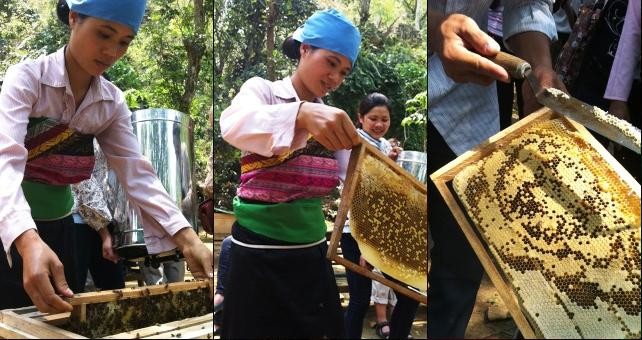
Female beekepers remove honeycomb frames from a modern beehive.
The bees from Ri Village feed on nectar from the flowers of forest plants and fruit trees such as mango, lychee and longan. So they not only make something women like Ngan can sell and eat, but also pollinate the flowers that make fruit for the entire community.
For this system to work the beekeepers will move their boxes to wherever the flowers bloom. But while the insects have transformed lives, their cold-blood makes them prone to extremes in weather and when I visited Ri village this week, the women I spoke to all said that something strange was happening.
"I have lived here a long time and I have experienced a lot of recent changes in the climate -- a lot more extreme weather, extreme heat and cold," said Truong Thi Hung, another beekeeper (photo below). "It has affected our livelihoods a lot."
The bees are meant to provide an extra pillar for the women to build their livelihoods on but the bees feel the extremes too. When it gets very hot, they can form a swarm and flee from the area, never to return. When it gets very cold, the bees become sluggish and too weak to forage for food. They can starve to death.
In the past, the villagers used a simple hollowed-out tree trunk to keep their bees in. Care Vietnam has provided better boxes that mean the women can keep more bees and can help them to face down the climatic shifts that could ruin this source of income.
To keep the bees warm when extreme cold comes, the women insulate the hives with sheets of woven leaves -- as held by Truong Thi Hung in the photo below. They also provide a sugar solution for the bees to drink. To keep the hives cool on hot days they raise the roofs above the boxes so drafts of air can pass. These are small and simple steps but they make a difference."
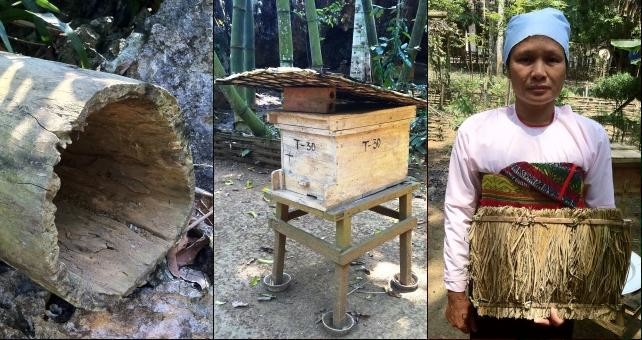
A traditional beehive made from a hollowed out log, a modern bee box, and beekeper, Truong Thi Hung.
"I think it's the weather," said Truong Thi Hung when I asked why she thought the bees sometimes suffered and either departed or died. "There are still many flowers and fruit trees in the area."
A third beekeeper called Truong Thi Thoi -- photo below -- agreed that the climate has changed. She told me she could no longer rely on her experience to guide her. "I see a lot of change," she said. "There is more drought and rainfall is now more intense and less predictable. Winter can be much warmer than normal or it can be very cold. I get a lot of problems producing rice and other food. We need better climate information and technical support to cope with this difficult situation."
When Care Vietnam asked people of this region to come up with their visions of the future, they unwittingly set an impossible challenge -- as nobody knows exactly what the future climate holds for people like the villagers in Ri. Ngan told me her own dream is to have a lot of bee hives so she can sell honey to other places, not just her commune. For now though she stays focused on the present. But if the climate changes much more, the ways she and the other women there will need to change more too.

Beekeper, Truong Thi Thoi and honey from her beehive.
Mike's journey to Ri village was part of a three-day visit to Care Vietnam projects ahead of the Sixth International Conference on Community-Based Adaptation to Climate Change, in Hanoi, Vietnam.
